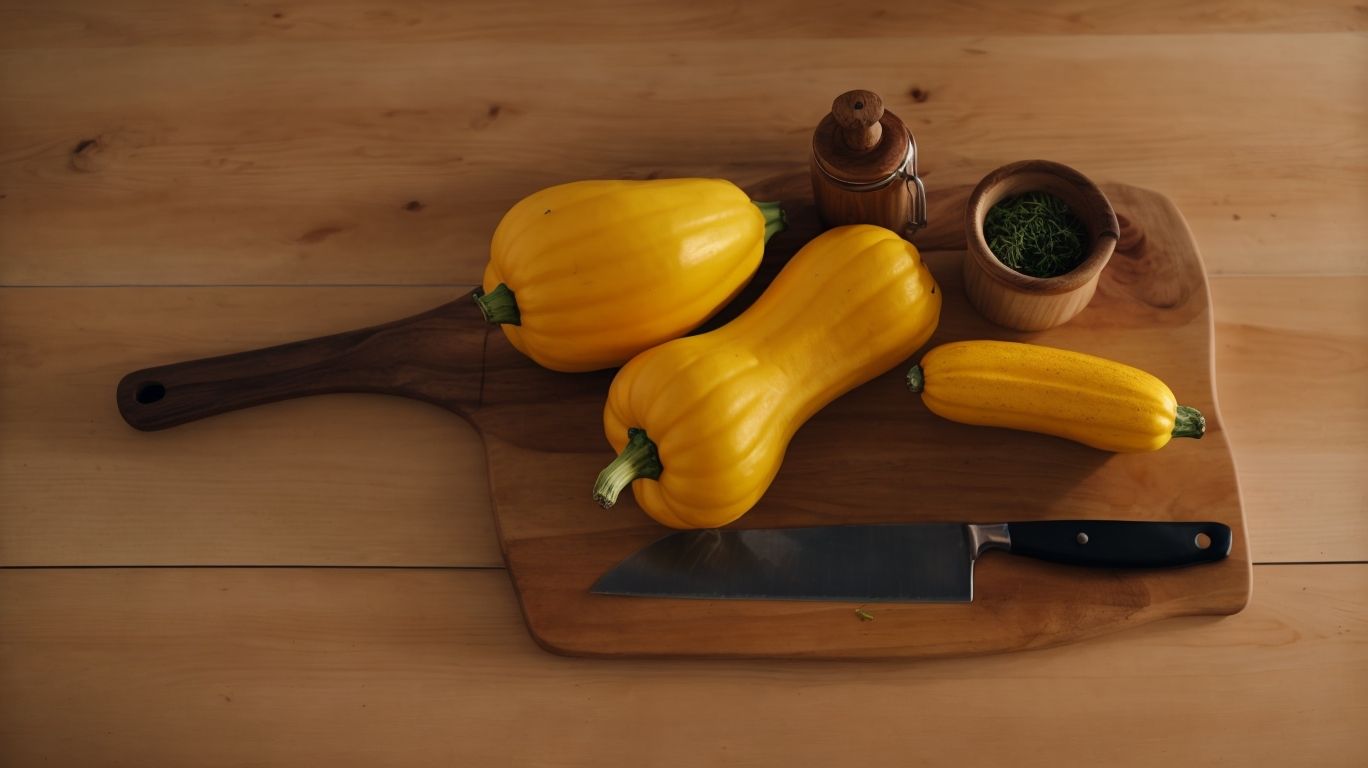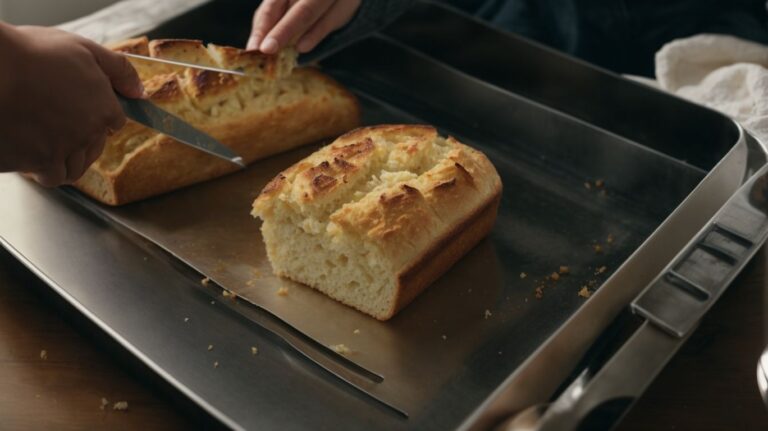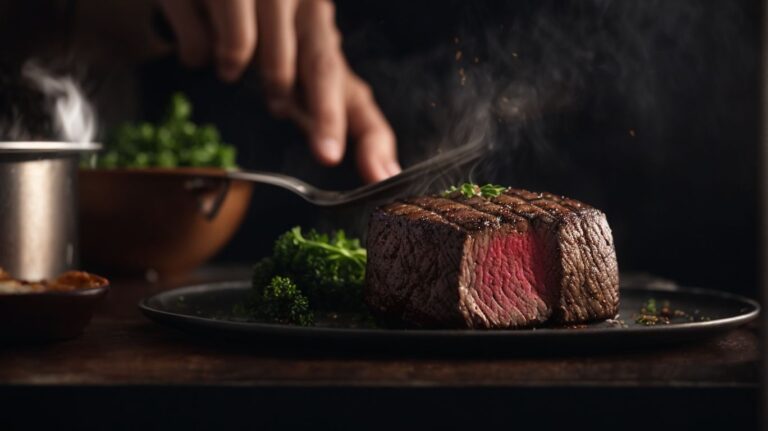How to Cook Yellow Squash?
Looking to add a versatile and nutritious vegetable to your cooking repertoire?
Yellow squash is a great option!
We will explore what yellow squash is, the different types available, how to choose and store it, and various methods for preparing and cooking it.
Whether you’re a seasoned chef or a novice, these tips will help you elevate your yellow squash dishes to the next level.
Key Takeaways:
What is Yellow Squash?
Yellow squash is a type of summer squash known for its mild flavor, tender texture, and versatility in various dishes.
Its vibrant yellow skin and soft flesh make it a popular choice for grilling, sautéing, or adding to salads. This squash variety is rich in vitamins and minerals, making it a nutritious addition to any meal. Yellow squash is commonly used in recipes for casseroles, stir-fries, and vegetable medleys.
Due to its delicate nature, yellow squash cooks quickly and pairs well with a wide range of flavors, such as garlic, herbs, and citrus. Whether roasted with olive oil and spices or sliced raw for dipping in hummus, yellow squash offers a refreshing and light taste that complements a variety of ingredients.
What are the Different Types of Yellow Squash?
Yellow squash comes in various types, including straightneck squash, crookneck squash, and pattypan squash, each with distinct shapes and flavors.
Straightneck squash, as the name suggests, features a smooth, straight neck that widens towards the base, giving it a cylindrical shape. This variation is often sought after for its mild and slightly sweet flavor. On the other hand, crookneck squash has a curved neck and bulbous base, providing a buttery flavor profile with a hint of nuttiness.
Lastly, pattypan squash stands out with its saucer-like shape and scalloped edges, making it a visually appealing option. It boasts a delicate, almost buttery taste, offering a versatile option for cooking methods like roasting, sautéing, or stuffing.
Straightneck Squash
Straightneck squash, also known as yellow straightneck, is a popular variety characterized by its smooth skin and vibrant yellow color, often used in recipes for its mild flavor and tender texture.
When selecting yellow straightneck squash, look for ones that are firm with a bright, glossy skin, free of any blemishes or soft spots. The flavor profile of straightneck squash can be described as subtle and slightly sweet, making it a versatile ingredient in both savory and sweet dishes. Its tender flesh cooks quickly, making it ideal for sautéing, grilling, roasting, or even pickling. Straightneck squash pairs well with flavors such as garlic, herbs, Parmesan cheese, and tomatoes, adding a delicious touch to soups, stir-fries, casseroles, and salads.
Crookneck Squash
Crookneck squash, a type of summer squash, features a distinctive curved neck and bulbous base, offering a slightly sweeter flavor compared to other varieties.
Its vibrant yellow skin and tender flesh make it a visually appealing and versatile ingredient in various culinary dishes.
The unique shape of crookneck squash lends itself well to being sliced into rounds or cubes for sautéing, grilling, or roasting.
This summer squash variety is often enjoyed simply seasoned with salt and pepper or used in more complex recipes like casseroles, stir-fries, and soups.
Its creamy texture and delicate taste pair beautifully with herbs such as thyme, basil, and rosemary, enhancing the dish with subtle flavors.
Pattypan Squash
Pattypan squash, often referred to as scallop squash due to its scalloped edges, is a visually appealing type of yellow squash that adds a decorative touch to dishes.
Its unique shape and vibrant hue make it a standout ingredient in various culinary presentations. The small size and round, flattened shape of pattypan squash lend themselves well to stuffing, grilling, or sautéing. When sliced, the intricate scalloped edges create an elegant visual appeal on salads or vegetable platters. The tender flesh of this squash variety boasts a mild, slightly sweet flavor, making it versatile for both sweet and savory dishes.
How to Choose and Store Yellow Squash?
When selecting yellow squash, opt for firm specimens with vibrant color and smooth skin, and store them in the refrigerator to maintain freshness and flavor.
Yellow squash is a versatile vegetable that adds a delicious flavor and nutritional value to various dishes. To ensure you pick the best quality squash, check for any blemishes or soft spots, as these can indicate overripeness or spoilage. Choose smaller to medium-sized squash, as they tend to be more tender and flavorful. When storing yellow squash in the refrigerator, avoid washing it before placing it in the crisper drawer, as excess moisture can accelerate spoilage. Remember to use the squash within a few days of purchase to enjoy it at its peak freshness.
Choosing the Right Squash
Choosing the right yellow squash involves examining the skin for blemishes, feeling the texture for firmness, and selecting specimens with vibrant color for optimal taste.
When selecting yellow squash, avoid any soft spots or discolorations on the skin as they could indicate spoilage. A good squash should feel heavy for its size, signaling moisture content. Run your fingers over the skin; the ideal texture is smooth and taut. Vibrant yellow color with no signs of dullness suggests peak freshness.
- Inspect the stem end
- Smell for a fresh, slightly sweet aroma
for a truly delicious squash to bring home.
Storing Yellow Squash
To store yellow squash, place it in a perforated plastic bag in the crisper drawer of the refrigerator to preserve its texture and flavor for an extended period.
Ensuring proper storage conditions for yellow squash is crucial in maintaining its freshness and quality. Placing the squash in a perforated plastic bag helps regulate the humidity level, preventing moisture buildup that can lead to spoilage.
- Storing yellow squash in the crisper drawer of the refrigerator helps maintain a consistent temperature, which is vital for preserving its delicate flavor.
- Refrigeration significantly slows down the ripening process of the squash, extending its shelf life and allowing you to enjoy it over a longer period.
Remember to check the squash regularly for any signs of decay and promptly remove any damaged pieces to prevent them from affecting the rest of the batch. By following these storage tips, you can make the most out of your yellow squash and savor its freshness in various culinary creations.
How to Prepare Yellow Squash?
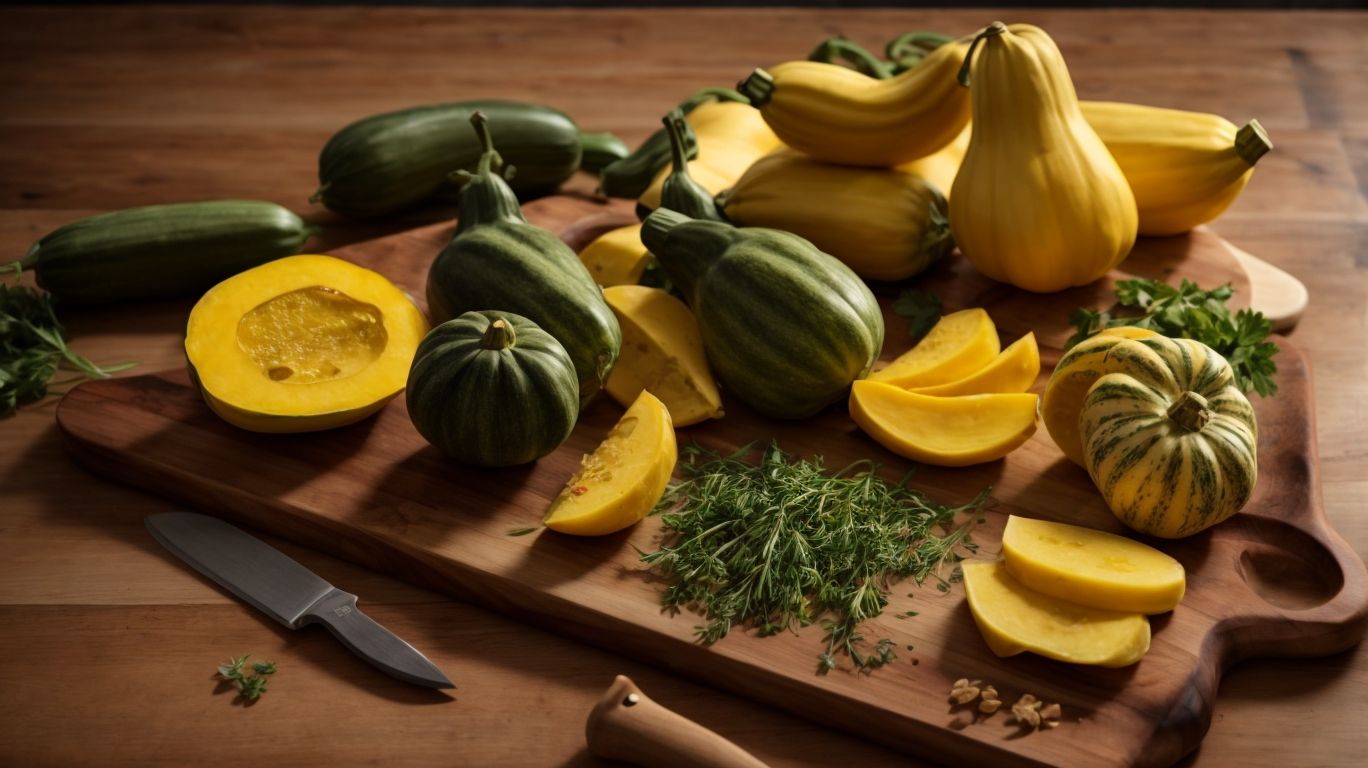
Credits: Poormet.Com – Adam Adams
Preparing yellow squash involves washing, cutting, and removing the seeds before incorporating it into a variety of dishes or cooking methods.
When handling yellow squash, it’s important to wash it thoroughly under cold running water to remove any dirt or residue. Once washed, pat it dry with a clean kitchen towel. Next, take a sharp knife and carefully slice off both ends of the squash. Then, proceed to cut the squash into your desired shape, whether it be slices, cubes, or rounds. To remove the seeds, you can simply use a spoon to scoop them out gently, ensuring to get rid of any fibrous bits that may linger. This preparation process sets the stage for delicious yellow squash dishes that highlight the vegetable’s natural flavors.
Washing and Cutting Yellow Squash
To wash and cut yellow squash, rinse it under cold water, trim the ends, and slice it according to the desired shape for a particular recipe or cooking method.
After rinsing the yellow squash, use a sharp knife to carefully trim off both ends to ensure a clean start. Next, determine the shape needed for the recipe; whether it’s diced for a stir-fry or sliced for grilling.
For dicing, cut the squash into uniform cubes for even cooking. When slicing, aim for equally sized pieces to maintain consistency. Take care to handle the squash gently to prevent smashing or uneven cuts. The choice of shape can impact the texture and presentation of the dish, so precision is key.
Removing the Seeds
Removing the seeds from yellow squash can be done by using a spoon or knife to scoop out the center, leaving behind the flesh for cooking purposes.
Another effective method for removing seeds from yellow squash is to cut the squash in half lengthwise and then use a spoon to scrape out the seeds and membrane. This method can be quicker than individually scooping out each seed. If you prefer a more delicate touch, a melon baller can be used to carefully remove the seeds while preserving the integrity of the squash flesh. Ensuring that the squash is cleaned thoroughly after removing the seeds is essential to prevent any residual bitterness. Remember, removing the seeds from yellow squash not only enhances the taste and texture of your dish but also makes it visually appealing.
Methods for Cooking Yellow Squash
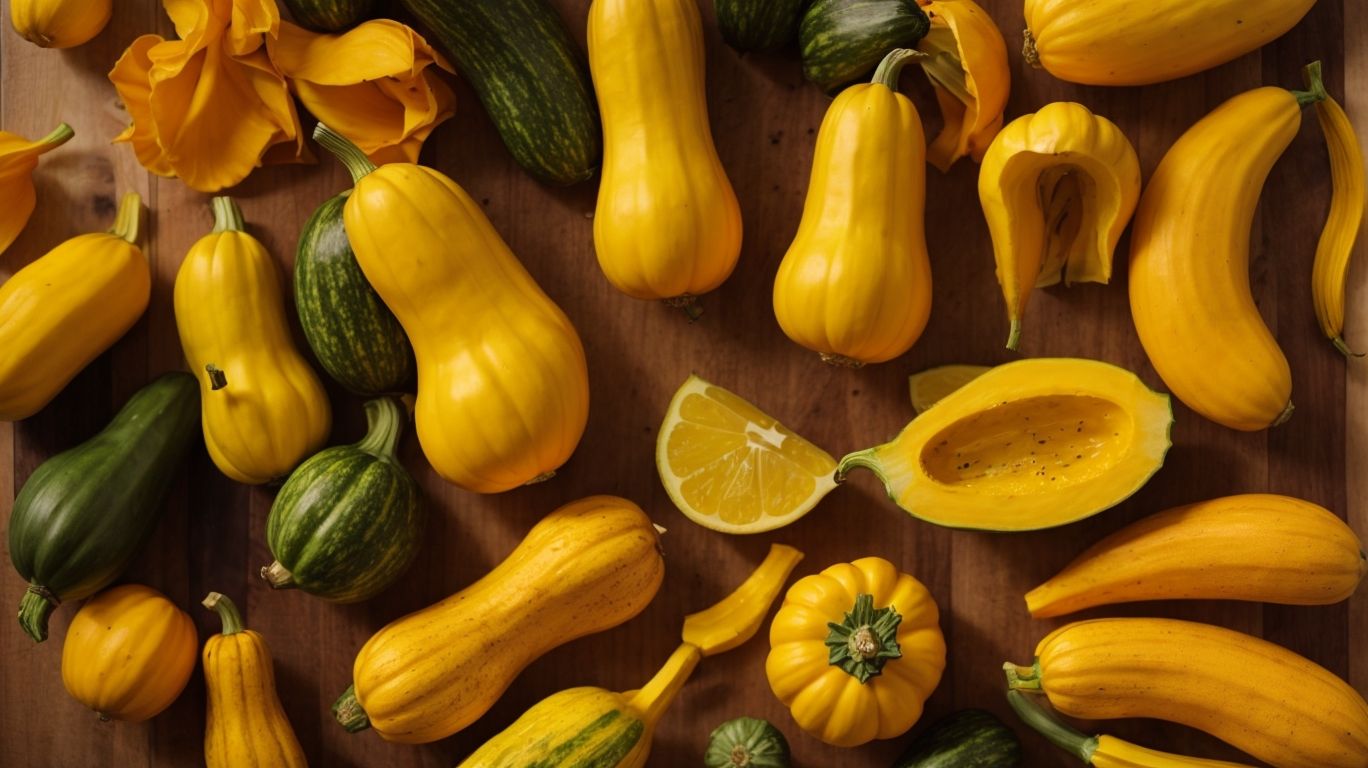
Credits: Poormet.Com – Douglas Brown
Yellow squash can be cooked using various methods such as grilling, roasting, sautéing, boiling, steaming, and baking, each offering distinct flavors and textures.
Grilling yellow squash imparts a smoky essence and a slight char that adds depth to this summer vegetable, enhancing its natural sweetness. On the other hand, roasting yellow squash intensifies its flavors, creating a caramelized exterior while maintaining a tender interior.
Sautéing yellow squash quickly in a hot pan with some olive oil brings out its inherent earthy notes, and the addition of garlic or herbs can elevate its taste profile.
Boiling yellow squash may seem simple, but it can be a great technique for adding the vegetable to soups or stews, allowing it to absorb other flavors while becoming tender.
Grilling Yellow Squash
Grilling yellow squash enhances its natural sweetness and imparts a smoky flavor, making it a popular choice for summer cookouts and barbecues.
Begin by selecting fresh, firm yellow squash, and washing them thoroughly. Next, slice the squash into medium-thick rounds or lengthwise strips, based on your preference for grilling. To prevent sticking, brush the squash with a light coating of olive oil or a marinade of your choice. Preheat the grill to medium-high heat for optimal searing and grill marks on the squash.
Once the grill is ready, place the squash pieces directly on the grates or use a grilling basket for smaller slices. Keep a close eye on the squash to avoid overcooking; typically, it takes around 5-7 minutes per side to achieve tender, charred perfection. Experiment with different seasonings like garlic, herbs, lemon zest, or a sprinkle of Parmesan cheese to enhance the flavors further.
Roasting Yellow Squash
Roasting yellow squash in the oven brings out its natural sweetness and creates a caramelized exterior, adding depth of flavor to this versatile vegetable.
When roasting yellow squash, the ideal temperature setting for the oven is around 400°F (200°C). Preheat the oven to ensure even cooking and optimal caramelization of the squash. Seasoning choices play a crucial role in enhancing the flavor profile of the roasted squash. Common options include olive oil, garlic, herbs like thyme or rosemary, salt, and pepper. Lightly toss the squash with the seasoning mix to coat them evenly before placing them on a baking sheet.
Sautéing Yellow Squash
Sautéing yellow squash in a pan with olive oil and fresh herbs creates a quick and flavorful side dish that complements various main courses.
The key to perfecting sautéed yellow squash lies in the technique and seasoning. Start by slicing the yellow squash into uniform rounds or half-moons to ensure even cooking. Heat olive oil in a pan over medium-high heat and add the squash, ensuring not to overcrowd the pan to allow proper caramelization. To enhance the flavor profile, consider adding minced garlic, a dash of red pepper flakes, or a sprinkle of parmesan cheese towards the end of cooking. The result is a tender yet slightly crisp dish bursting with savory flavors that elevate any meal.
Boiling Yellow Squash
Boiling yellow squash is a simple method that preserves its natural texture and flavor, suitable for incorporating into soups, stews, or casseroles.
When boiling yellow squash, it’s important to start with a pot of water brought to a gentle boil. This way, the squash cooks evenly without becoming mushy. Depending on the size of the squash pieces, the cooking duration typically ranges from 5-10 minutes for slices or cubes to ensure they are tender but not overcooked.
Aside from being a versatile ingredient in various dishes, boiled yellow squash can also be seasoned with herbs like thyme, oregano, or parsley to enhance its natural flavor profile. The softness of boiled squash makes it a wonderful addition to purees, sauces, or even as a standalone side dish alongside grilled meats or fish.
Steaming Yellow Squash
Steaming yellow squash retains its nutrients and delicate texture, offering a healthy and quick cooking method that preserves the vegetable’s natural goodness.
When steaming yellow squash, it is important to start by selecting fresh, firm squash to ensure the best results. To steam the squash, begin by cutting it into uniform slices or cubes for even cooking. Place the squash in a steamer basket over a pot of boiling water, cover it with a lid, and steam for 5-7 minutes until the squash is tender but still slightly crisp.
For added flavor, you can season the steamed yellow squash with a sprinkle of garlic powder, a drizzle of olive oil, a dash of salt, and a squeeze of lemon juice. These simple seasonings complement the natural sweetness of the squash without overpowering its taste.
Steamed yellow squash makes a versatile side dish that pairs well with grilled chicken, fish, or tofu. You can also toss the steamed squash with cooked quinoa, chopped herbs, and a light vinaigrette to create a refreshing summer salad.
Baking Yellow Squash
Baking yellow squash with Parmesan cheese and herbs creates a savory and gratifying dish that can serve as a standalone meal or a delightful side dish.
When considering the baking method for yellow squash, it’s essential to preheat the oven to around 400°F to ensure the squash cooks through evenly while still maintaining its natural flavors and textures.
Cheese pairings play a crucial role in enhancing the overall taste profile of the dish. Alongside Parmesan, other excellent choices include sharp cheddar for extra richness or crumbled feta for a tangy twist.
As for seasoning options, a dash of garlic powder, a sprinkle of fresh thyme, and a drizzle of olive oil can elevate the flavors to a whole new level, creating a mouthwatering dish that’s sure to impress.
Tips for Cooking Yellow Squash
Enhance your yellow squash dishes by adding flavorful herbs, avoiding overcooking, and repurposing leftovers creatively to minimize food waste and maximize culinary enjoyment.
Regarding enhancing the flavor of your yellow squash, think beyond the basic salt and pepper. Experiment with aromatic herbs like thyme, rosemary, and basil to elevate the taste profile. These herbs not only add depth to the dish but also provide a refreshing burst of flavor.
Cooking precautions are essential when preparing yellow squash to preserve its delicate texture and nutritional value. Opt for quick cooking methods such as stir-frying or roasting to prevent the squash from turning mushy. Remember, yellow squash cooks quickly, so keep a close eye to avoid overcooking.
To make the most out of leftover yellow squash, consider incorporating it into frittatas, soups, or salads. By incorporating these leftovers into new dishes, you not only reduce food waste but also introduce variety to your meals. Get creative with your culinary creations and transform simple ingredients into flavorful masterpieces.
Adding Flavor to Yellow Squash
Elevate the taste of yellow squash by incorporating fresh herbs, grated Parmesan cheese, and herb-infused oils to create a rich and aromatic dish that delights the senses.
For a burst of freshness, consider using a blend of parsley, thyme, and chives to complement the mild flavor of the yellow squash. Enhance the savory notes with a sprinkle of garlic powder or a pinch of red pepper flakes for a hint of heat. Pairing the squash with caramelized onions or roasted cherry tomatoes can add depth and sweetness to the dish, balancing its flavors.
Experimenting with different seasonings such as smoked paprika, cumin, or even a touch of curry powder can bring a unique twist to your yellow squash recipe. Drizzle some citrus-infused olive oil before roasting or grilling the squash to infuse a zesty brightness that enhances its natural taste. For a creamy texture, consider stirring in a dollop of tangy Greek yogurt or a splash of balsamic vinegar to elevate the dish further.
Avoiding Overcooking Yellow Squash
To prevent mushy texture and loss of nutrients, avoid overcooking yellow squash by using quick cooking methods and monitoring the cooking time carefully to retain its natural crunch.
One effective way to maintain the perfect texture of yellow squash is by sautéing it in a hot skillet with a drizzle of olive oil for just a few minutes until it’s slightly tender but still firm.
Another helpful tip is to steam the yellow squash for a short period to lock in its vibrant color and keep it from becoming overly soft.
When grilling yellow squash, make sure to slice it uniformly to ensure even cooking and to prevent some pieces from turning mushy while others stay undercooked.
Using Leftover Yellow Squash
Transform leftover yellow squash into new culinary creations such as vegetarian lasagna, homemade pizza toppings, or delicious side dishes to add variety to your meals and reduce food waste.
Utilizing leftover yellow squash opens up a world of possibilities in the kitchen. Consider incorporating it into a refreshing summer salad with cherry tomatoes, feta cheese, and a balsamic vinaigrette dressing.
Experiment with making a creamy yellow squash soup with a hint of nutmeg for a cozy meal on a chilly evening.
For a lighter option, try adding thinly sliced yellow squash to a stir-fry along with bell peppers, broccoli, and a savory soy sauce.
Another creative idea is to blend cooked yellow squash into a smooth puree and use it as a base for a nutritious dip for fresh cut veggies.
Frequently Asked Questions
What are some simple ways to cook yellow squash?
Yellow squash can be cooked in a variety of ways such as grilling, sautéing, roasting, or even baking. It can also be used in dishes like stir-fries, soups, and casseroles.
How do I know when yellow squash is cooked?
Yellow squash is cooked when it turns tender and can be easily pierced with a fork. This usually takes about 10-15 minutes, depending on the cooking method used.
Can I eat yellow squash raw?
Yes, yellow squash can be eaten raw. It can add a nice crunch to salads or be used as a healthy snack with some dip. However, cooking it can bring out its natural sweetness and enhance its flavor.
What are some seasonings that go well with cooked yellow squash?
Some popular seasonings for cooked yellow squash include garlic, onion, Italian herbs, lemon juice, and Parmesan cheese. You can also experiment with different spices to find your favorite combination.
How can I prevent yellow squash from getting watery when cooking?
To prevent squash from getting watery, sprinkle it with salt and let it sit for about 10 minutes before cooking. This helps draw out excess water. You can also cook it in a dry pan or use a paper towel to absorb any excess water while cooking.
Can I freeze cooked yellow squash?
Yes, you can freeze cooked yellow squash. Allow it to cool completely before storing in an airtight container or freezer bag. It can be stored in the freezer for up to 3 months. Thaw before reheating.

